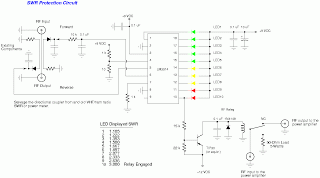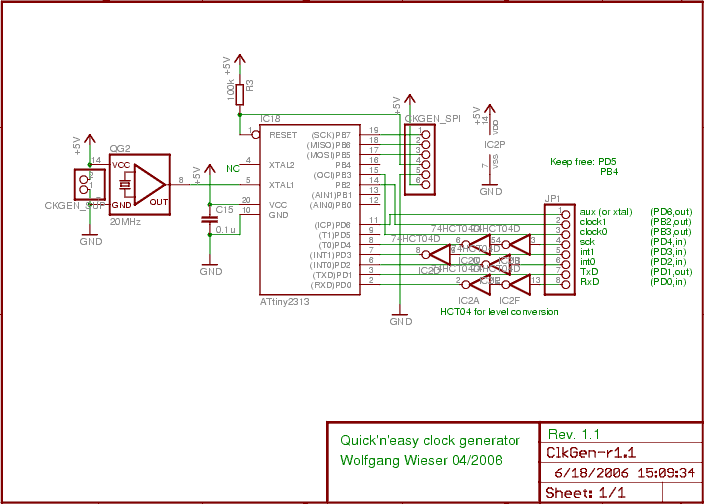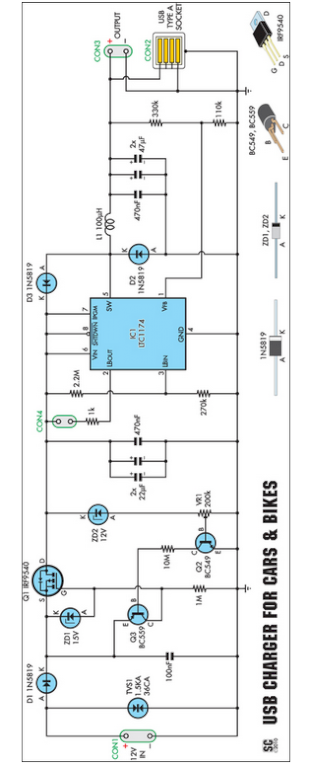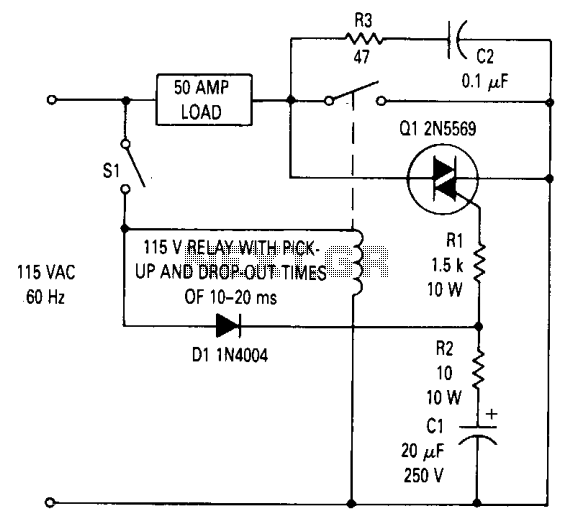
Cortex M3 MCU features USB firmware protection
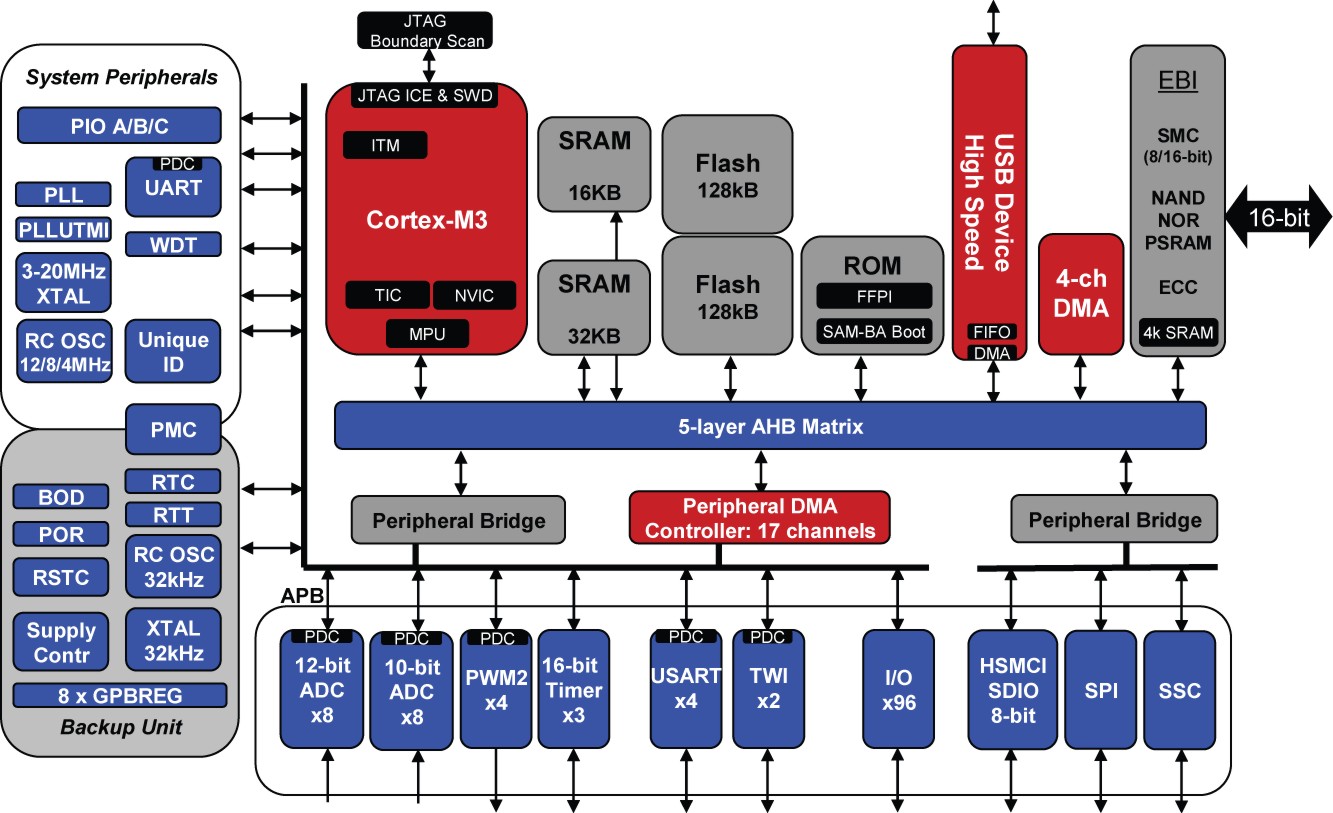
Atmel has joined NXP, ST, Luminary Micro (now TI), and Toshiba as a microcontroller vendor utilizing the ARM Cortex-M3 processor core. The company's initial Cortex-M3 aims to stand out by providing high-speed USB functionality, firmware protection, differential input ADC, and a core voltage of 1.6V. Product Marketing Manager Jacko Wilbrink noted that unlike many other Cortex-M3-based devices, which are aimed at low and mid-level data rate applications, Atmel has developed an ARM9-type infrastructure around its M3 core. This includes numerous DMA options, multilayer buses, and segmented memories that facilitate high-end communication through high-speed USB, SDIO, MMC, and SPI. Atmel leveraged its expertise in high-speed USB design from the SAM9 product line to adapt this technology for the lower power, lower speed Cortex-M3. The SAM3U is currently the only Cortex-M3 design offering high-speed USB. In addition to high-speed interfaces, the SAM3U features on-chip SDIO/SD/MMC host and SPI interfaces. Drawing from its experience in the smart card market, Atmel has incorporated an on-chip memory protection unit (MPU) and a unique 128-bit ID for each device, both of which can safeguard firmware in both on-chip and external memory. As firmware development resources increase relative to hardware, protecting the algorithms that drive system functionality becomes crucial, and the added security may deter potential counterfeiters. The device features a high data-bandwidth architecture with a 5-layer bus matrix, 23 DMA channels, and distributed on-chip memory that includes up to 52KB of SRAM divided into three blocks and up to 256KB of flash memory in two banks. The dual bank flash allows for in-application programming (IAP), enabling one memory bank to be updated with new firmware while the processor runs from the other bank. A programmable boot feature allows switching between the two flash banks upon the next MCU reboot. Additional features encompass 12-bit and 10-bit ADCs, five UARTs, dual I2C, I2S, timers, and power and reset management. The SAM3U operates with a supply voltage ranging from 1.62 to 3.6V and is designed for applications such as high-speed gateways in industrial, medical, data processing, and telecommunications. The SAM3U flash MCU can achieve a maximum clock rate of 96 MHz at 1.8V and 85°C, integrating high data rate peripherals including a 480 Mbps high-speed USB device, a 384 Mbit/s 1/4/8-bit MMC 4.3 Host, a 192 Mbps 1/4-bit SDIO/SDCard 2.0, a 48 Mbit/s SPI, a 1Msample/s 12-bit ADC, and a 500+ Mbps external bus interface. The combination of a 5-layer system bus matrix, dual peripheral bus, four central DMA channels, a dedicated DMA for the high-speed USB device, 17 Peripheral DMA (PDC) channels, and distributed memory ensures seamless internal and external data flows with minimal processor overhead. The central DMA incorporates a built-in FIFO to enhance bus latency tolerance, supports programmable length burst transfers to optimize clock cycles per transfer, and facilitates scatter, gather, and linked list operations. It can be configured for memory-to-memory transfers or memory-to-peripheral transfers, such as high-speed SPI or SDIO/SD/MMC media card interfaces (MCI). The high-speed DMAs are assigned a dedicated layer in the bus matrix for parallel data transfers, while the peripheral DMA is integrated into the peripheral programmer's interface and has limited linked list support for two memory areas. The SAM3U can simultaneously stream multiple 100Mbit/s peripherals, process the payload, and manage system control efficiently.Atmel joins NXP, ST, Luminary Micro (now TI), and Toshiba as a microcontroller vendor to use the ARM Cortex-M3processor core. As a presumed replacement for some of their ARM 7 based MCU products, Atmel`s first Cortex-M3aims to differentiate from the rest by offering high speed USB functionality, firmware protection, differential input ADC, and 1.
6 2V core voltage. When asked what differentiates Atmel from the other Cortex competitors, Product Marketing Manager Jacko Wilbrink offered this assesment: "The majority of other Cortex M3-based devices are targeted to low and mid-level data rate applications. We have built an ARM9-type infrastructure around our M3 core, with lots of DMA options, multilayer busses and segmented memories that can support high-end communication from high speed USB, SDIO, MMC and SPI.
" Atmel used their experience designing high speed USB for their SAM9 product line and have been able to port the design to the lower power, lower speed Cortex-M3. (For some more technical details on how they were able to do it, read this article ) The SAM3U is currently the only Cortex-M3 design to offer high speed USB.
Building on their experience with high speed interfaces in general, the SAM3U also contains SDIO/SD/MMC host and SPI interfaces on-chip. Borrowing from Atmel`s experience in smart card market, the SAM3U also features an on chip memory protection unit (MPU) and a 128-bit unique ID (for every device) that both can be used to protect the firmware both on-chip, and in an external memory device.
As more resources get poured into firmware developement than hardware, protecting the algorithms that make the system work becomes more important. The added security might be just enough to dissuade a potential counterfeiter. The device also has a high data-bandwidth architecture with a 5-layer bus matrix, 23 DMA channels and distributed on-chip memory including up to 52Kbytes of SRAM split into three blocks and up to 256Kbytes of flash in two banks.
The dual bank flash offers in-application programming (IAP) where one memory bank is written with a new version of the firmware while the processor executes from the other bank. A programmable boot feature enables switching between the two flash banks at the next MCU reboot. Additional features include 12- and 10-bit ADCs, 5 UARTs, dual I2C, I2S, timers, and power and reset management.
The SAM3U`s supply voltage ranges from 1. 62 to 3. 6V. The SAM3U is aimed at applications such as high speed gateways in industrial, medical, data processing and telecom. The SAM3U flash MCU has a maximum clock rate of 96 MHz at 1. 8V, 85 °C and integrates high data rate peripherals including a 480 Mbps high-speed USB device, 384 Mbit/s 1/4/8-bit MMC 4.
3 Host, 192 Mbps 1/4-bit SDIO/SDCard 2. 0, 48 Mbit/s SPI, a 1Msample/s 12-bit ADC and a 500+ Mbps external bus interface. A combination of a 5-layer system bus matrix, dual peripheral bus, 4 central DMA channels, one dedicated DMA to the high speed USB device, 17 Peripheral DMA (PDC) channels, and distributed memory of up to 52Kbytes of SRAM split in three blocks and 256Kbytes of flash in two banks ensures uninterrupted internal and external data flows with minimum processor overhead. The central DMA features a built-in FIFO for increased tolerance to bus latency, programmable length burst transfers that optimize the average number of clock cycles per transfer, scatter, gather and linked list operations.
It can be programmed for memory-to-memory transfers or memory-to-peripheral like a high speed SPI or SDIO/SD/MMC media card interfaces (MCI). The high speed DMAs have a dedicated layer in the bus matrix for parallel data transfers. The peripheral DMA isintegrated in the peripheral programmer`s interface and has a reduced linked list support, limited to two memory areas.
The SAM3U is able to simultaneously stream several 100Mbit/s peripherals, process the payload and control the syst 🔗 External reference
6 2V core voltage. When asked what differentiates Atmel from the other Cortex competitors, Product Marketing Manager Jacko Wilbrink offered this assesment: "The majority of other Cortex M3-based devices are targeted to low and mid-level data rate applications. We have built an ARM9-type infrastructure around our M3 core, with lots of DMA options, multilayer busses and segmented memories that can support high-end communication from high speed USB, SDIO, MMC and SPI.
" Atmel used their experience designing high speed USB for their SAM9 product line and have been able to port the design to the lower power, lower speed Cortex-M3. (For some more technical details on how they were able to do it, read this article ) The SAM3U is currently the only Cortex-M3 design to offer high speed USB.
Building on their experience with high speed interfaces in general, the SAM3U also contains SDIO/SD/MMC host and SPI interfaces on-chip. Borrowing from Atmel`s experience in smart card market, the SAM3U also features an on chip memory protection unit (MPU) and a 128-bit unique ID (for every device) that both can be used to protect the firmware both on-chip, and in an external memory device.
As more resources get poured into firmware developement than hardware, protecting the algorithms that make the system work becomes more important. The added security might be just enough to dissuade a potential counterfeiter. The device also has a high data-bandwidth architecture with a 5-layer bus matrix, 23 DMA channels and distributed on-chip memory including up to 52Kbytes of SRAM split into three blocks and up to 256Kbytes of flash in two banks.
The dual bank flash offers in-application programming (IAP) where one memory bank is written with a new version of the firmware while the processor executes from the other bank. A programmable boot feature enables switching between the two flash banks at the next MCU reboot. Additional features include 12- and 10-bit ADCs, 5 UARTs, dual I2C, I2S, timers, and power and reset management.
The SAM3U`s supply voltage ranges from 1. 62 to 3. 6V. The SAM3U is aimed at applications such as high speed gateways in industrial, medical, data processing and telecom. The SAM3U flash MCU has a maximum clock rate of 96 MHz at 1. 8V, 85 °C and integrates high data rate peripherals including a 480 Mbps high-speed USB device, 384 Mbit/s 1/4/8-bit MMC 4.
3 Host, 192 Mbps 1/4-bit SDIO/SDCard 2. 0, 48 Mbit/s SPI, a 1Msample/s 12-bit ADC and a 500+ Mbps external bus interface. A combination of a 5-layer system bus matrix, dual peripheral bus, 4 central DMA channels, one dedicated DMA to the high speed USB device, 17 Peripheral DMA (PDC) channels, and distributed memory of up to 52Kbytes of SRAM split in three blocks and 256Kbytes of flash in two banks ensures uninterrupted internal and external data flows with minimum processor overhead. The central DMA features a built-in FIFO for increased tolerance to bus latency, programmable length burst transfers that optimize the average number of clock cycles per transfer, scatter, gather and linked list operations.
It can be programmed for memory-to-memory transfers or memory-to-peripheral like a high speed SPI or SDIO/SD/MMC media card interfaces (MCI). The high speed DMAs have a dedicated layer in the bus matrix for parallel data transfers. The peripheral DMA isintegrated in the peripheral programmer`s interface and has a reduced linked list support, limited to two memory areas.
The SAM3U is able to simultaneously stream several 100Mbit/s peripherals, process the payload and control the syst 🔗 External reference

